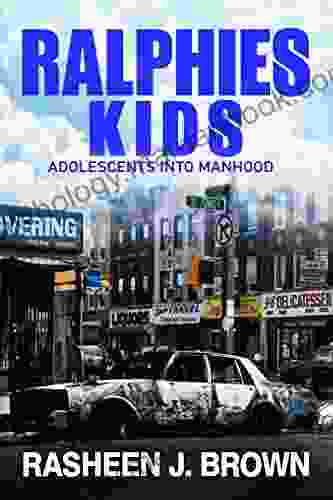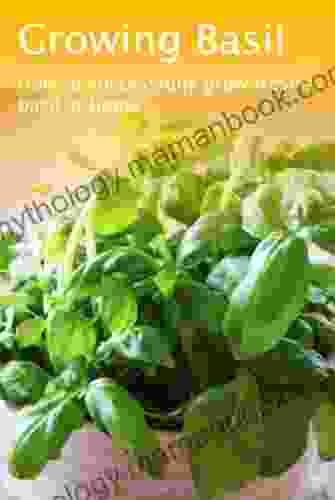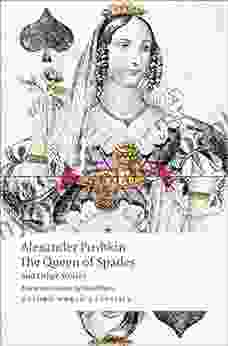Growing Basil: A Comprehensive Guide to Cultivating This Aromatic Herb

Basil (Ocimum basilicum) is an aromatic herb that belongs to the mint family (Lamiaceae). Native to tropical regions of Asia and Africa, basil is now cultivated worldwide for its culinary and medicinal properties.
4.2 out of 5
| Language | : | English |
| File size | : | 99 KB |
| Text-to-Speech | : | Enabled |
| Screen Reader | : | Supported |
| Enhanced typesetting | : | Enabled |
| Print length | : | 11 pages |
| Lending | : | Enabled |
Basil is a versatile herb that can be used fresh, dried, or processed into various products. The leaves are the most commonly used part of the plant and can be added to salads, soups, stews, and sauces. Basil is also a popular ingredient in pesto, a traditional Italian sauce made with basil, olive oil, garlic, and pine nuts.
Varieties of Basil
There are over 150 varieties of basil, each with its unique flavor and aroma. Some of the most popular varieties include:
- Sweet basil (Ocimum basilicum): The most common variety of basil with a sweet, fragrant aroma.
- Thai basil (Ocimum basilicum var. thyrsiflora): A variety with a strong, anise-like flavor that is commonly used in Thai cuisine.
- Lemon basil (Ocimum basilicum var. citriodorum): A variety with a lemony, citrusy aroma and flavor.
- Purple basil (Ocimum basilicum var. purpurascens): A variety with dark purple leaves and a mild, sweet flavor.
Growing Basil from Seed
Basil is a relatively easy herb to grow from seed. The seeds are small and black, and they can be started indoors or outdoors.
To start basil seeds indoors:
- Fill a seed tray or pots with seed starting mix.
- Sow the seeds on the surface of the soil and cover them lightly with more soil.
- Keep the soil moist and warm (70-80 degrees Fahrenheit).
- The seeds will germinate in 5-10 days.
To start basil seeds outdoors:
- Wait until the soil has warmed to at least 65 degrees Fahrenheit before planting the seeds.
- Choose a sunny location with well-drained soil.
- Sow the seeds 1/4 inch deep in the soil and space them 6-8 inches apart.
- Keep the soil moist and the bed free of weeds.
Transplanting Basil
Once the basil seedlings have developed their first set of true leaves, they can be transplanted into their permanent location.
To transplant basil:
- Dig a hole that is twice the width of the root ball.
- Gently remove the seedling from the pot and place it in the hole.
- Backfill the hole with soil and tamp it down gently.
- Water the basil well and mulch around the base of the plant.
Growing Basil in Containers
Basil can also be grown in containers, which makes it a great option for people with limited space or who live in cold climates.
To grow basil in containers:
- Choose a pot that is at least 12 inches wide and deep.
- Fill the pot with a well-draining potting mix.
- Plant the basil seedlings 6-8 inches apart in the pot.
- Water the basil well and place the pot in a sunny location.
Watering Basil
Basil is a thirsty plant that needs to be watered regularly, especially during hot, dry weather.
To water basil:
- Water the basil deeply, but infrequently.
- Avoid overwatering, as this can lead to root rot.
- Water the soil around the base of the plant, not the leaves.
Fertilizing Basil
Basil is a heavy feeder that benefits from regular fertilization.
To fertilize basil:
- Fertilize the basil every 2-3 weeks with a balanced liquid fertilizer.
- Follow the instructions on the fertilizer label carefully.
- Avoid overfertilizing, as this can burn the roots.
Pests and Diseases
Basil is susceptible to a few pests and diseases, including:
- Aphids: Aphids are small, green insects that can damage basil plants by sucking the sap from the leaves.
- Spider mites: Spider mites are tiny, red insects that can cause the leaves of basil plants to turn yellow and drop off.
- Fungal diseases: Fungal diseases, such as powdery mildew and downy mildew, can cause the leaves of basil plants to become discolored and wilted.
To prevent and control pests and diseases, keep the basil plants healthy and watered regularly. Remove any infected leaves from the plant and dispose of them properly. You can also use insecticidal soap or neem oil to control pests.
Harvesting Basil
Basil can be harvested throughout the growing season.
To harvest basil:
- Cut the basil leaves from the stem just above a set of leaves.
- Basil can be harvested fresh or dried.
- To dry basil, hang the leaves upside down in a warm, dry place.
Storing Basil
Fresh basil can be stored in the refrigerator for up to a week.
To store basil in the refrigerator:
- Wrap the basil leaves in a damp paper towel.
- Place the basil in a plastic bag and store it in the refrigerator.
Dried basil can be stored in an airtight container in a cool, dark place for up to a year.
Basil is an easy-to-grow herb that can be used in a variety of culinary and medicinal applications. By following the tips in this guide, you can successfully grow and harvest basil in your own garden.
4.2 out of 5
| Language | : | English |
| File size | : | 99 KB |
| Text-to-Speech | : | Enabled |
| Screen Reader | : | Supported |
| Enhanced typesetting | : | Enabled |
| Print length | : | 11 pages |
| Lending | : | Enabled |
Do you want to contribute by writing guest posts on this blog?
Please contact us and send us a resume of previous articles that you have written.
 Top Book
Top Book Novel
Novel Fiction
Fiction Nonfiction
Nonfiction Literature
Literature Paperback
Paperback Hardcover
Hardcover E-book
E-book Audiobook
Audiobook Bestseller
Bestseller Classic
Classic Mystery
Mystery Thriller
Thriller Romance
Romance Fantasy
Fantasy Science Fiction
Science Fiction Biography
Biography Memoir
Memoir Autobiography
Autobiography Poetry
Poetry Drama
Drama Historical Fiction
Historical Fiction Self-help
Self-help Young Adult
Young Adult Childrens Books
Childrens Books Graphic Novel
Graphic Novel Anthology
Anthology Series
Series Encyclopedia
Encyclopedia Reference
Reference Guidebook
Guidebook Textbook
Textbook Workbook
Workbook Journal
Journal Diary
Diary Manuscript
Manuscript Folio
Folio Pulp Fiction
Pulp Fiction Short Stories
Short Stories Fairy Tales
Fairy Tales Fables
Fables Mythology
Mythology Philosophy
Philosophy Religion
Religion Spirituality
Spirituality Essays
Essays Critique
Critique Commentary
Commentary Glossary
Glossary Bibliography
Bibliography Index
Index Table of Contents
Table of Contents Preface
Preface Introduction
Introduction Foreword
Foreword Afterword
Afterword Appendices
Appendices Annotations
Annotations Footnotes
Footnotes Epilogue
Epilogue Prologue
Prologue Ellen Ecker Ogden
Ellen Ecker Ogden Thomas Carper
Thomas Carper Laurence De B Anderson
Laurence De B Anderson Alexander Manu
Alexander Manu Cate Beauman
Cate Beauman Steve Berry
Steve Berry Fern Britton
Fern Britton Chanel Miller
Chanel Miller Xqdesigns
Xqdesigns Aj Skelly
Aj Skelly Sandra King Savic
Sandra King Savic Tia Amdurer
Tia Amdurer Vasudha Rai
Vasudha Rai Max Ciampoli
Max Ciampoli Paul Smith
Paul Smith H P Albarelli Jr
H P Albarelli Jr Heather Slade
Heather Slade Edward M Hallowell
Edward M Hallowell Kaleigh Mills
Kaleigh Mills Jay Heins
Jay Heins
Light bulbAdvertise smarter! Our strategic ad space ensures maximum exposure. Reserve your spot today!
 Jessie CoxFollow ·16k
Jessie CoxFollow ·16k Bernard PowellFollow ·10.3k
Bernard PowellFollow ·10.3k Hugh BellFollow ·11.8k
Hugh BellFollow ·11.8k Elias MitchellFollow ·4k
Elias MitchellFollow ·4k Glen PowellFollow ·9.1k
Glen PowellFollow ·9.1k Ibrahim BlairFollow ·12.8k
Ibrahim BlairFollow ·12.8k Braden WardFollow ·3k
Braden WardFollow ·3k Elton HayesFollow ·18.2k
Elton HayesFollow ·18.2k

 Christopher Woods
Christopher WoodsDeath's Second Chance: The Unbelievable Story of Cris...
On July 29, 2008, Cris...

 Esteban Cox
Esteban CoxFrom Ralphie Kids to Adolescents: The Journey to Manhood
The transition from...

 Chris Coleman
Chris ColemanLetters From Young Father Poems: Delving into the Heart...
Fatherhood, a journey filled...

 Holden Bell
Holden BellCounterintuitive Marketing: Achieving Great Results Using...
In the ever-evolving world of...
4.2 out of 5
| Language | : | English |
| File size | : | 99 KB |
| Text-to-Speech | : | Enabled |
| Screen Reader | : | Supported |
| Enhanced typesetting | : | Enabled |
| Print length | : | 11 pages |
| Lending | : | Enabled |















